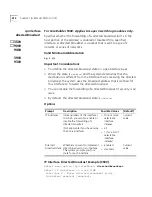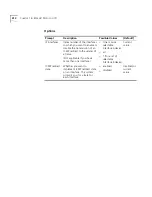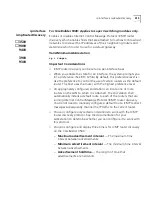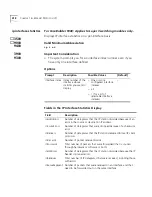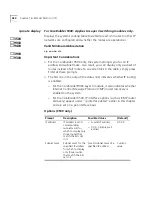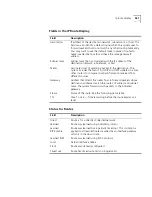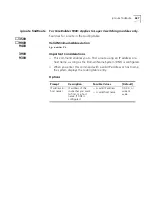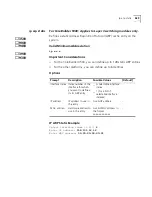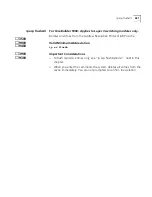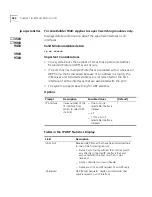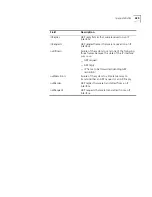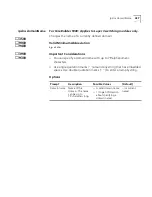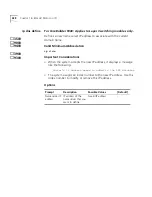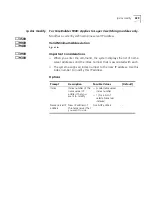
ip route default
425
✓
3500
✓
9000
✓
9400
✓
3900
✓
9300
ip route default
For CoreBuilder 9000: Applies to Layer 3 switching modules only.
Adds a default route to the routing table immediately.
Valid Minimum Abbreviation
ip route de
Important Considerations
■
If you define a default route, the system uses it to forward packets
that do not match any other routing table entry. The system can learn
a route through the routing protocol, or you can statically configure a
default route.
■
The system can learn a default route.
■
If the routing table does not contain a default route, the system
cannot forward a packet that does not match any other routing table
entry. When the system drops the packet, it sends an Internet Control
Message Protocol (ICMP)
destination unreachable
message to the
host that sent the packet.
■
On the CoreBuilder 3500 or the CoreBuilder 9000 Layer 3 module,
you establish a static sink default route, so that the system can
advertise itself as a default router. The static sink default route is not
used in any of the system’s forwarding decisions because it does not
have a valid next-hop gateway, but it can be advertised to all of the
system’s neighbors (unless you establish IP policies to prevent the
advertisement).
Defining a static sink default route causes the route to be advertised
through any IP protocols that you have configured on the system (for
example, Open Shortest Path First (OSPF) and RIP). For more
information about static sink default routes, see the
Implementation
Guide
for the CoreBuilder 3500 or for the CoreBuilder 9000.
Options
Prompt
Description
Possible Values
[Default]
Gateway IP
address
IP address of the
route that you want
to add as the default
■
A valid IP address
■
0.0.0.0 (static sink
default route)
–
Summary of Contents for CoreBuilder 9000
Page 18: ......
Page 26: ...26 ABOUT THIS GUIDE ...
Page 27: ...I GETTING STARTED Chapter 1 Administration Overview Chapter 2 Command Summary ...
Page 28: ......
Page 64: ...64 CHAPTER 2 COMMAND SUMMARY ...
Page 65: ...II SYSTEM LEVEL FUNCTIONS Chapter 3 System Environment Chapter 4 Module Environment ...
Page 66: ......
Page 148: ......
Page 202: ......
Page 248: ...248 CHAPTER 8 FIBER DISTRIBUTED DATA INTERFACE FDDI ...
Page 250: ......
Page 320: ...320 CHAPTER 11 TRUNKS ...
Page 368: ...368 CHAPTER 14 VIRTUAL LANS VLANS ...
Page 394: ......
Page 502: ...502 CHAPTER 17 VIRTUAL ROUTER REDUNDANCY VRRP ...
Page 604: ...604 CHAPTER 19 OPEN SHORTEST PATH FIRST OSPF ...
Page 660: ...660 CHAPTER 20 IPX ...
Page 687: ...VII TRAFFIC POLICY Chapter 22 Quality of Service QoS and RSVP ...
Page 688: ......
Page 744: ...744 CHAPTER 22 QUALITY OF SERVICE QOS AND RSVP ...
Page 745: ...VIII MONITORING Chapter 23 Event Log Chapter 24 Roving Analysis ...
Page 746: ......
Page 754: ...754 CHAPTER 23 EVENT LOG ...
Page 764: ...764 CHAPTER 24 ROVING ANALYSIS ...
Page 765: ...IX REFERENCE Appendix A Technical Support ...
Page 766: ......
Page 772: ...772 APPENDIX A TECHNICAL SUPPORT ...
Page 784: ......


